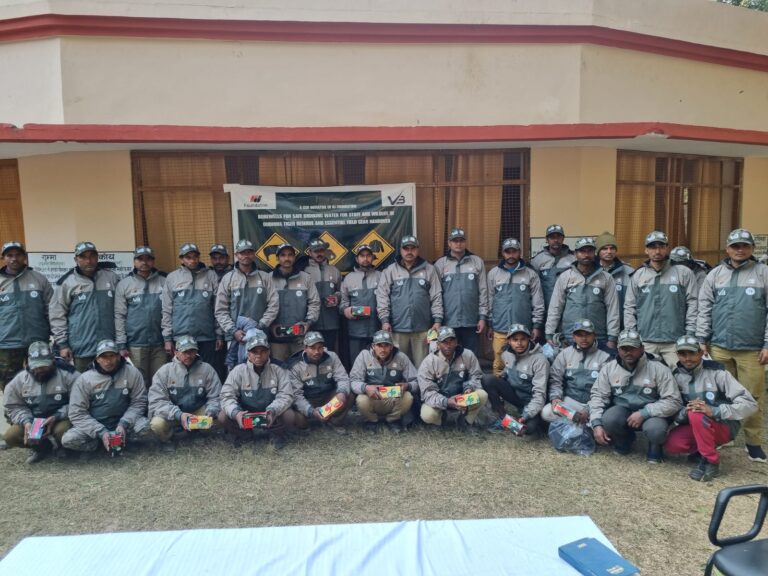“On earth, there is no heaven, but some pieces of it”
Picture this: you have woken up to a symphony of bird calls which slowly softened as the day wore on; now sitting in an incredibly verdant tract of land a sudden breeze sends a shower of delicate, fragrant mahua flowers all over you. You may be forgiven for thinking you were in one of India’s famous National Parks or Wildlife Sanctuaries instead of a little community-managed forest called a ‘sacred grove’.
Unlike sanctuaries where human presence is taboo (apart from the droves of tourists, of course), sacred groves are a form of community-managed conservation, where the humans are as much a part of the ecosystem as all other animate things. They live and interact with nature, defending its biodiversity through ancient laws that are more sacrosanct than the newer constitutional ones.
Sacred Groves: A Rich Resource
There are an estimated 100,000 – 150,000 sacred groves in India. Incredibly rich from an ecological, biological, historical, and cultural standpoint, they have been declared to have “Incomparable Values” in the country’s National Environment Policy.


Scattered all over the country, these forests are the last remaining domains of ancient growth in populated areas, preserving some of the rarest kind of flora and serving as a refuge for wildlife. They also serve as repositories for medicinal plants, which are valuable to both the forest’s inhabitants and the medical pharmacopeia. A widely cited example is that of the sacred groves of Andhra Pradesh. Local populations treat common illnesses and problems with a variety of medicinal plant species. Another paragon is the roughly 105 medicinal plants found in the Chilkigarh sacred forest in the Midnapore district of West Bengal, 12 of which are endangered outside the sacred grove.
The sacred groves also protect precious water resources, their ponds, and streams acting as reservoirs in often arid regions.
The existence of sacred groves has helped to reduce soil erosion, save soil, maintain the water cycle, protect groundwater, and promote the natural dispersal of seeds from valuable species of trees.
Community Beliefs: Conservation at Their Core
No matter in which part of the country a sacred grove is located, be it in the Western Ghats, the bamboo forests along the eastern coast, the tropical forests in the south, or the dense Himalayan forests, it is revered by the community that belongs to it. The names reflect this, with sacred groves being called Devara Kaadu in Karnataka, Kovil Kaadu in Tamil Nadu, Dev Van in Himachal Pradesh, Garamthan in West Bengal, Orans in Rajasthan, Law Niam in Meghalaya, Than in Assam, to cite a few examples.
Every sacred grove has a presiding deity who is thought to watch over the grove’s inhabitants. Many communities carry out yearly ceremonies and rituals to appease the deity and protect the village. The most important everyday ritual, common to all sacred groves, is the preservation of the forest itself.
While the consensus among conservationists is that sacred groves exist as an ancient form of nature worship or religious beliefs, another hypothesis by Dr. Madhav Gadgil suggests that some groves have more ‘secular’ reasons for their existence, such as the preservation of a rare herb, plant, or freshwater resource. This means that sacred groves are scattered through all kinds of habitats, not just at sites of religious significance like river mouths or mountain tops.
As a result, sacred groves continue to preserve diverse gene pools not typically found outside protected areas.
Another vital resource that these sacred groves conserve is community knowledge. Numerous communities have coexisted peacefully with wildlife populations and still do. According to Rajasthan’s Bishnoi tribe, all living things have the right to exist and to share resources. Protectors of sacred groves, such as the Bishnoi, have firsthand knowledge of the vital services their ecosystems confer, and much can be learned from them.
The first step towards this, however, is to learn about sacred groves so that they can be documented and preserved before they are swallowed up in the great race to urbanization. The Sacred Earth Trust is collating information about India’s sacred groves under one roof to create the first comprehensive database for all Indian states.

Support our endeavors via our donate page or by volunteering your time.




